Zoom Telephonics 1103WL FCC CFR Title 47 Part 15 Subpart C Part User Manual WL9217E QIG FCC v01
Zoom Telephonics Inc FCC CFR Title 47 Part 15 Subpart C Part WL9217E QIG FCC v01
user manual

1103WLUserGuide
Copyright©2008AllRightsReserved. 1of7
User Guide
Single‐Band 802.11n Half mini‐PCIe Wireless LAN Card

1103WLUserGuide
Copyright©2008AllRightsReserved. 2of7
Federal Communication Commission Interference Statement
This equipment has been tested and found to comply with the limits for a Class B digital device,
pursuant to Part 15 of the FCC Rules. These limits are designed to provide reasonable protection
against harmful interference in a residential installation. This equipment generates, uses and can
radiate radio frequency energy and, if not installed and used in accordance with the instructions, may
cause harmful interference to radio communications. However, there is no guarantee that
interference will not occur in a particular installation. If this equipment does cause harmful
interference to radio or television reception, which can be determined by turning the equipment off
and on, the user is encouraged to try to correct the interference by one of the following measures:
- Reorient or relocate the receiving antenna.
- Increase the separation between the equipment and receiver.
- Connect the equipment into an outlet on a circuit different from that to which the receiver is
connected.
- Consult the dealer or an experienced radio/TV technician for help.
This device complies with Part 15 of the FCC Rules. Operation is subject to the following two
conditions: (1) This device may not cause harmful interference, and (2) this device must accept any
interference received, including interference that may cause undesired operation.
FCC Caution: Any changes or modifications not expressly approved by the party responsible for
compliance could void the user's authority to operate this equipment.
IMPORTANT NOTE:
FCC Radiation Exposure Statement:
This equipment complies with FCC radiation exposure limits set forth for an uncontrolled
environment. To maintain compliance with FCC RF exposure compliance requirements, please
follow operation instruction as documented in this manual.
This transmitter must not be co-located or operating in conjunction with any other antenna or
transmitter.
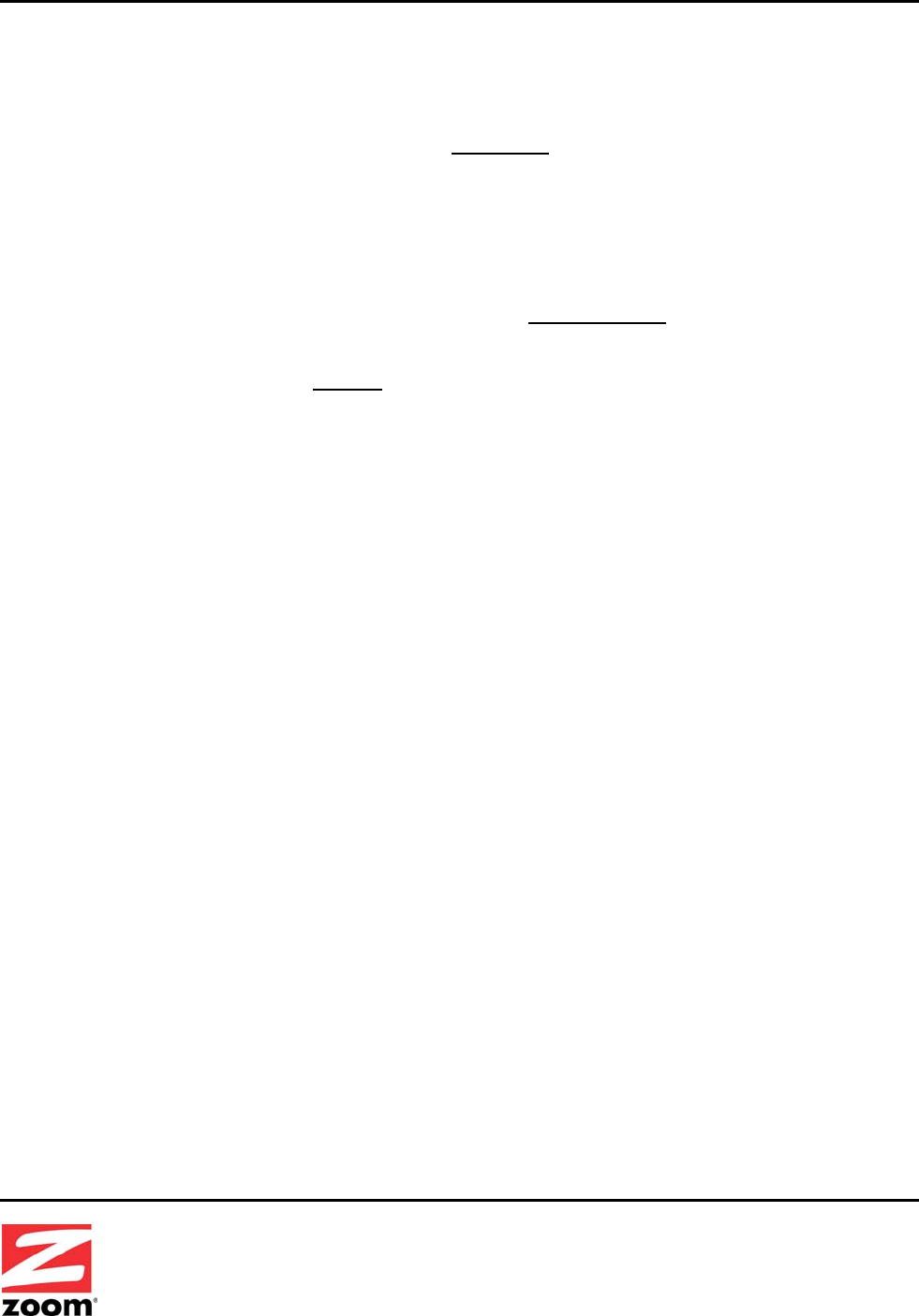
1103WLUserGuide
Copyright©2008AllRightsReserved. 3of7
This device is intended only for OEM integrators under the following conditions:
1) The antenna must be installed such that 20 cm is maintained between the antenna.
2) The transmitter module may not be co-located with any other transmitter or antenna.
As long as 2 conditions above are met, further transmitter test will not be required. However, the
OEM integrator is still responsible for testing their end-product for any additional compliance
requirements required with this module installed (for example, digital device emissions, PC
peripheral requirements, etc.).
IMPORTANT NOTE: In the event that these conditions can not be met (for example certain laptop
configurations or co-location with another transmitter), then the FCC authorization is no longer
considered valid and the FCC ID can not be used on the final product. In these circumstances, the
OEM integrator will be responsible for re-evaluating the end product (including the transmitter) and
obtaining a separate FCC authorization.
End Product Labeling
This transmitter module is authorized only for use in device where the antenna may be installed such
that 20 cm may be maintained between the antenna and users. The final end product must be
labeled in a visible area with the following: “Contains TX FCC ID: BDN1103WL”.
Manual Information To the End User
The OEM integrator has to be aware not to provide information to the end user regarding how to
install or remove this RF module in the user’s manual of the end product which integrates this
module.
The users manual for OEM integrators must include the following information in a prominent location
“IMPORTANT NOTE: To comply with FCC RF exposure compliance requirements. The antenna
must not be co-located or operating in conjunction with any other antenna or transmitter.
This radio transmitter FCCID: BDN1103WL has been approved by FCC to operate with the antenna
types listed below with the maximum permissible gain and required antenna impedance for each
antenna type indicated. Antenna types not included in this list, having a gain greater than the
maximum gain indicated for that type, are strictly prohibited for use with this device.
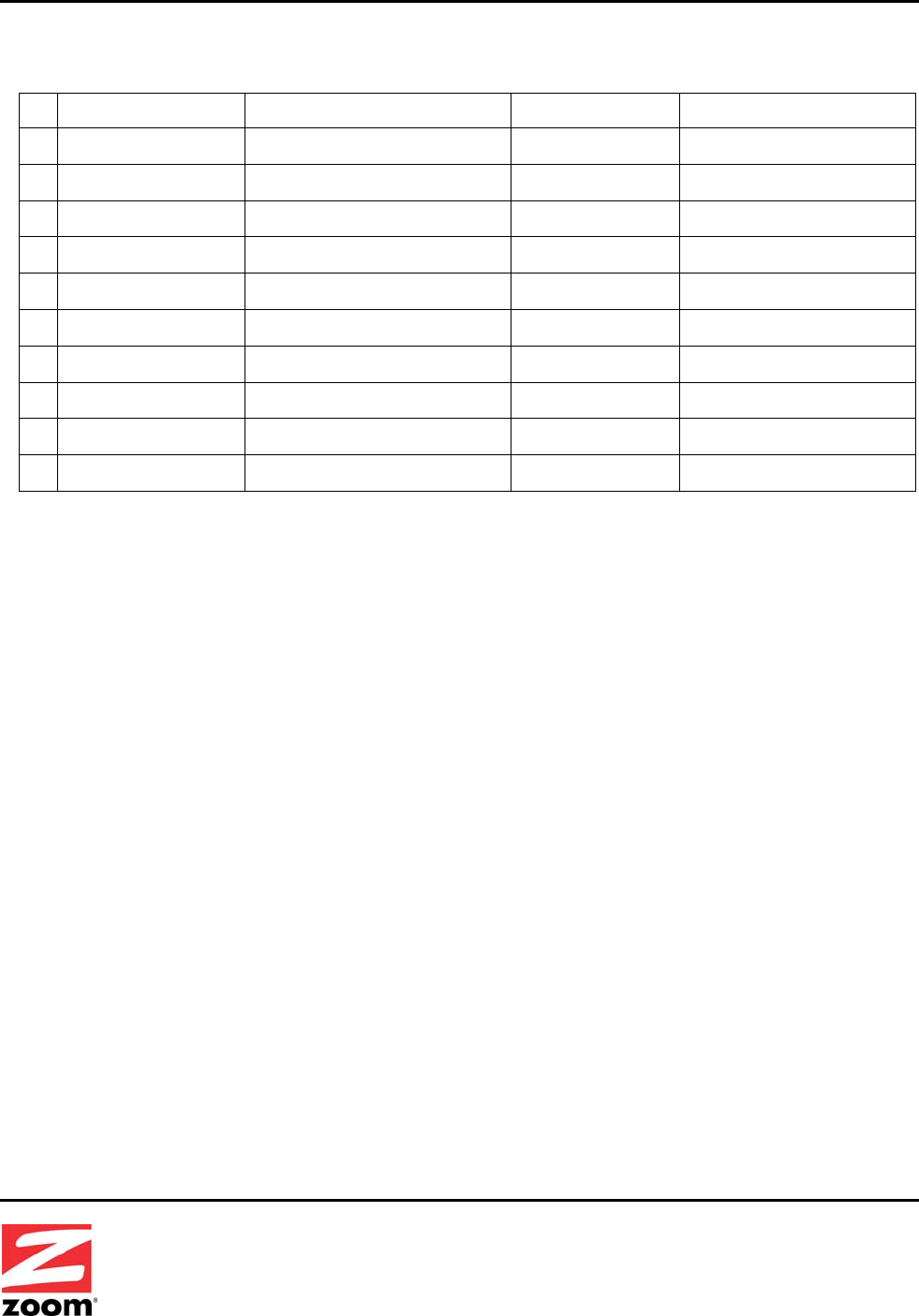
1103WLUserGuide
Copyright©2008AllRightsReserved. 4of7
Antenna List
No.ManufacturerPartNo.AntennaTypePeakGain
1 ARISTOTLEREF‐02‐P118‐70B‐150DipoleAntenna4.2dBifor2.4GHz
2 KINSUN2AN‐C101WE‐019RDipoleAntenna2.28 dBi for 2.4 GHz
3 KINSUN2AN‐C101WE‐029RDipoleAntenna1.76 dBi for 2.4 GHz
4 KINSUN2AN‐C101WE‐049RDipoleAntenna2.24 dBi for 2.4 GHz
5 KINSUN2AN‐C201BK‐019RDipoleAntenna1.97 dBi for 2.4 GHz
6 KINSUN2AN‐CA01WE‐019RDipoleAntenna1.76 dBi for 2.4 GHz
7 KINSUN2AN‐113051‐009RDipoleAntenna2.24 dBi for 2.4 GHz
8 KINSUN2AN‐C101WE‐009RDipoleAntenna1.62dBifor2.4GHz
9 KINSUN2AN‐C101BK‐009RDipoleAntenna2.39 dBi for 2.4 GHz
10 KINSUN2AN‐C901BK04HERDipoleAntenna2.28 dBi for 2.4 GHz
Note:TheantennaconnectorisI‐PEXtype.
Canada-Industry Canada (IC)
Operation is subject to the following two conditions:
this device may not cause interference and
this device must accept any interference, including interference that may cause undesired operation
of the device.
IMPORTANT NOTE:
IC Radiation Exposure Statement:
This equipment with IC radiation exposure limits set forth for an uncontrolled environment. To
maintain compliance with IC RF exposure compliance requirements, please follow operation
instruction as documented in this manual.
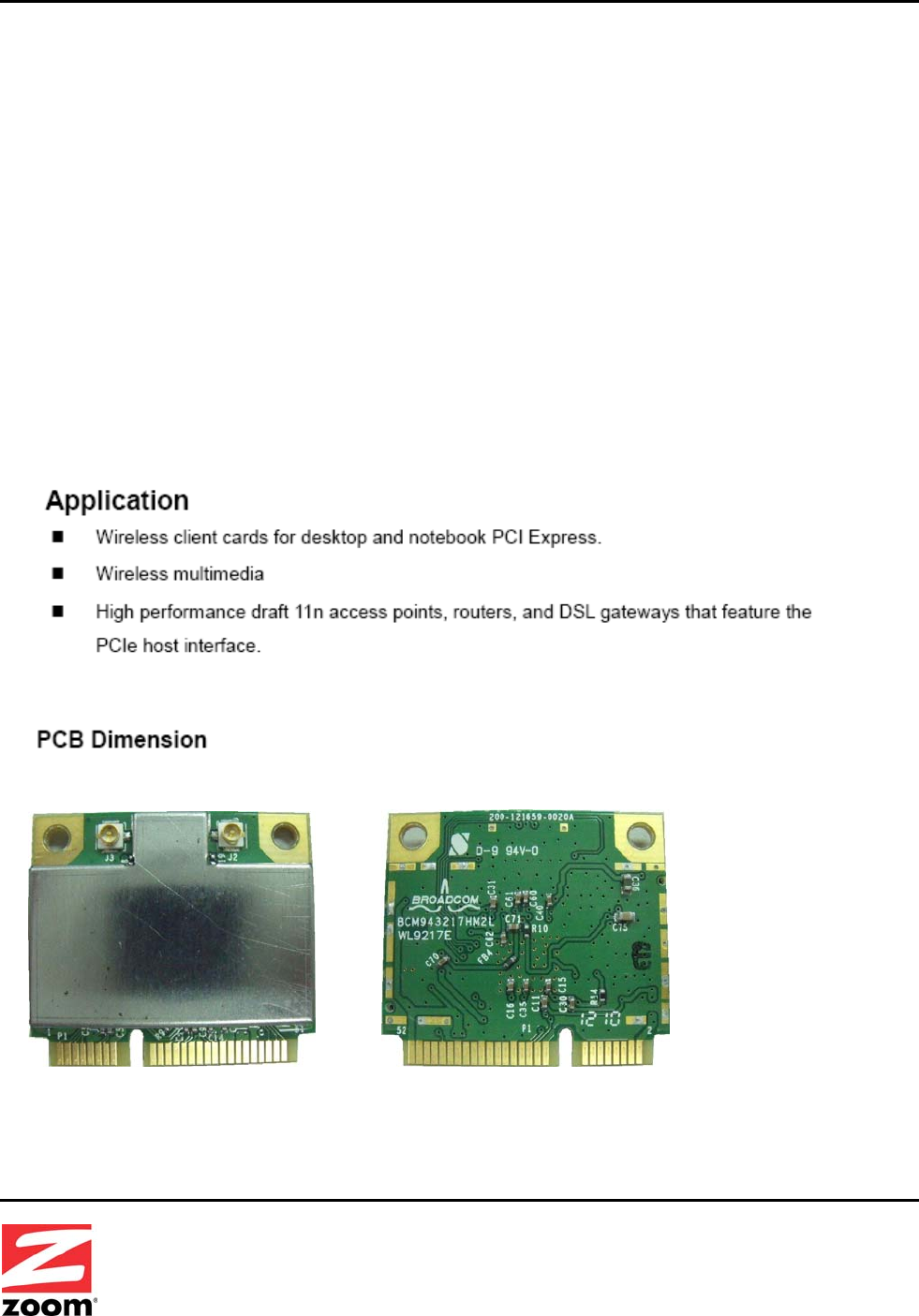
1103WLUserGuide
Copyright©2008AllRightsReserved. 5of7
1. INTRODUCTION
The 1103WL provides ultra-high performance (up to 150 Mbps) transmission rate in the 2.4GHz
band. Backward compatible with the current 802.11 b/g/n network devices gives your laptop the
freedom of wireless connectivity with the performance, security, and manageability industry
standards in the security and quality of service (QoS), as the draft 802.11i and 802.11e standards
respectively. The 1103WL is complemented by drivers and networking tools for various versions of
the Windows operating system. Extensive technical documentation on integration issues such as
antenna design, customizing driver, and management software can be obtained by request.
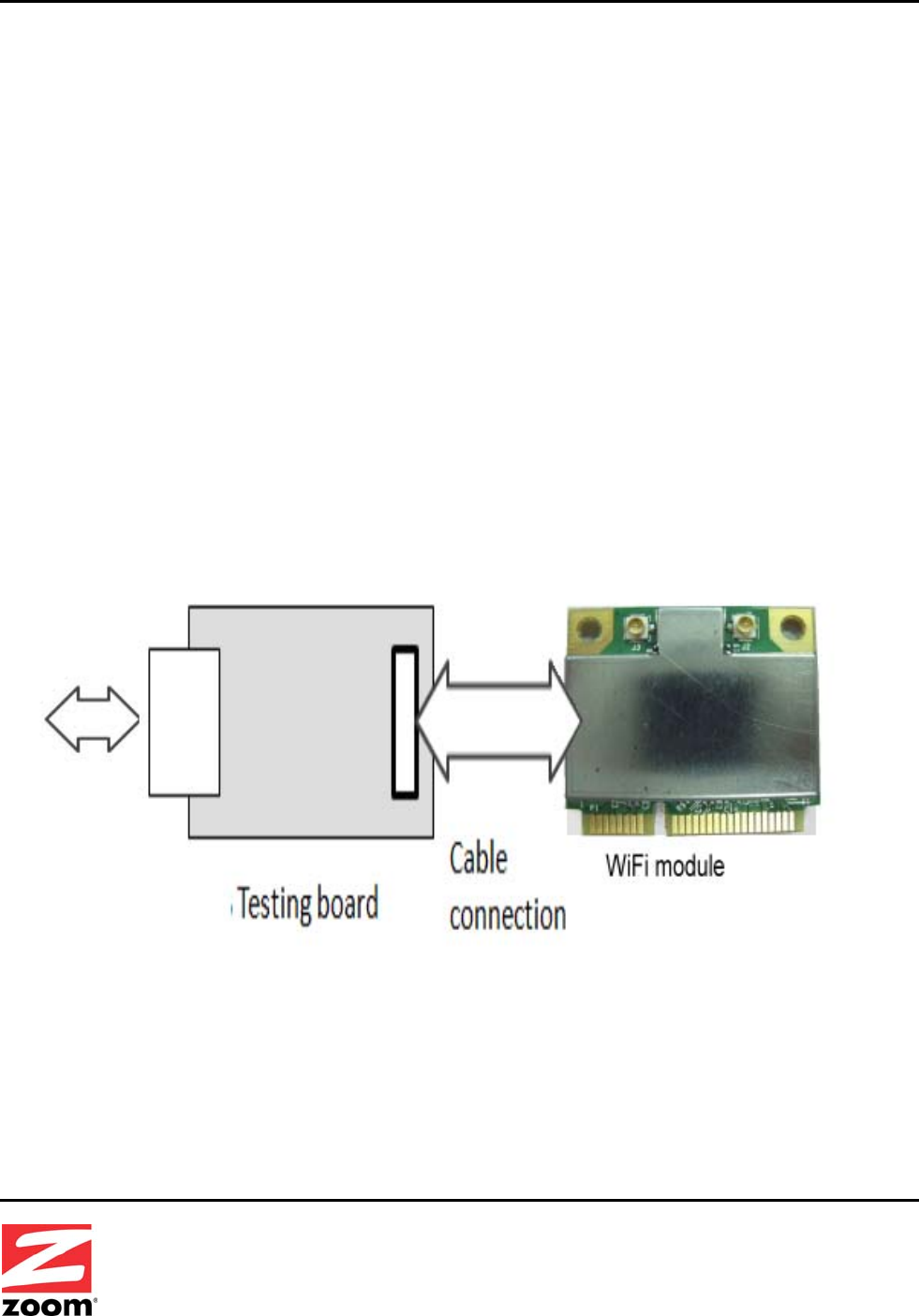
1103WLUserGuide
Copyright©2008AllRightsReserved. 6of7
2. INSTALLATION
2.1 Installed in Laptop PC
The Mainboard of the system should provide a Host connector and Cable connection for wifi
module. Please follow the SOP to install & assemble it step by step.
2.2 Testing in Lab
The module is embedded inside Notebook or other Equipment. If for testing purpose, we provide
the “Testing Board” in order to let tester connect 1103WL via the special cable connection to PC
externally. The Testing Board provides 3.3V conversion from PC Host. Please plug into any con
port on your PC.
After Hardware installation, when system find the new hardware, please install the driver /
software correctly.
TheWL9217Eprovidesultra‐highperformance(upto150Mbps)transmissionrateinthe2.4GHzband.
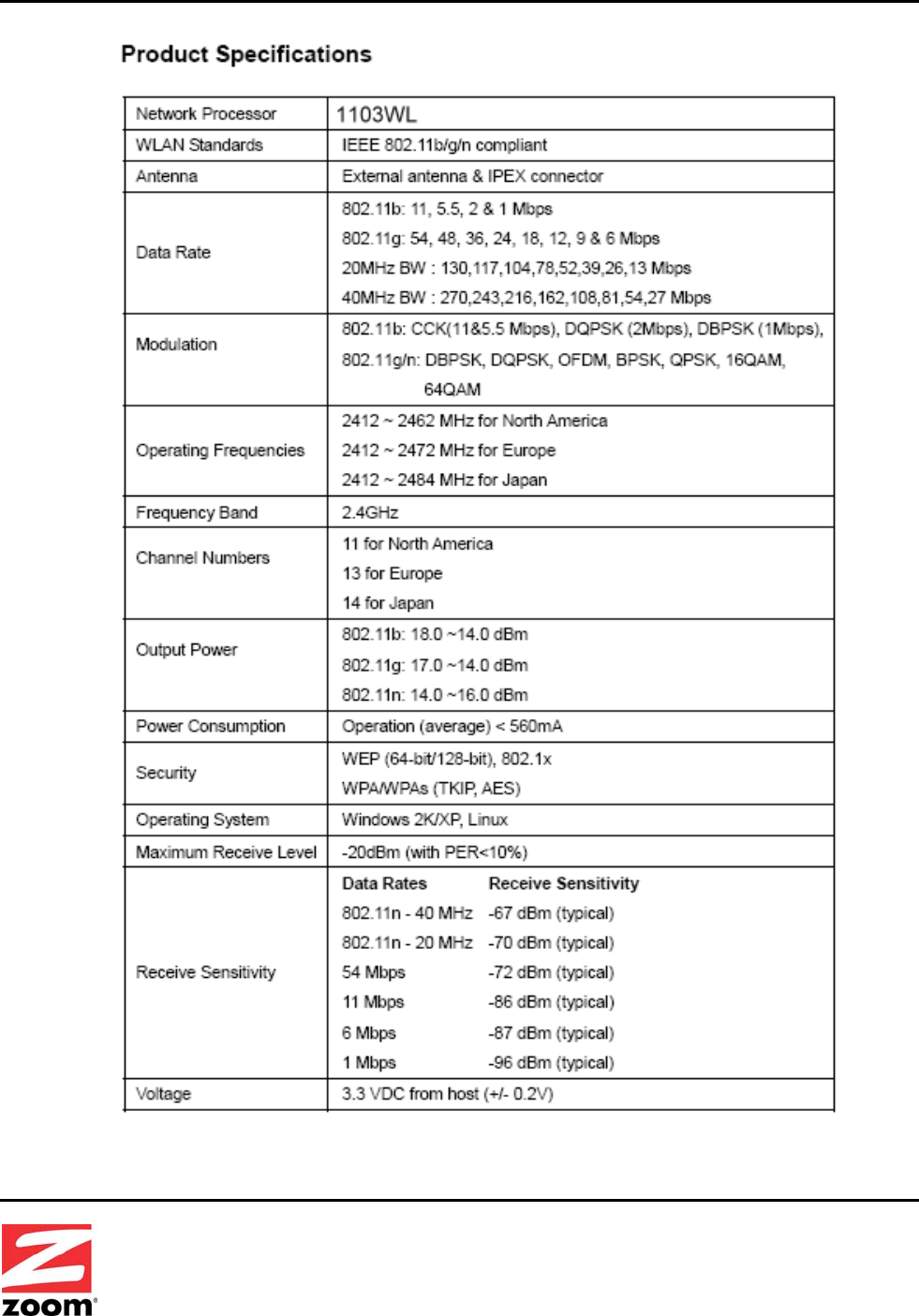
1103WLUserGuide
Copyright©2008AllRightsReserved. 7of7